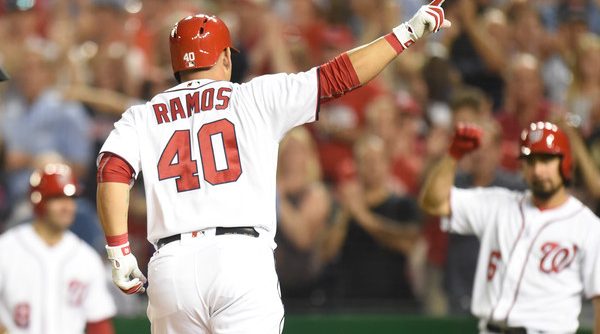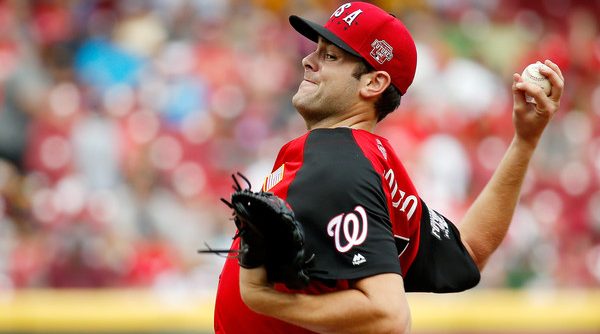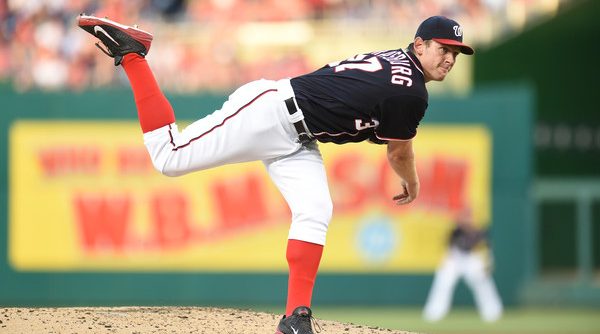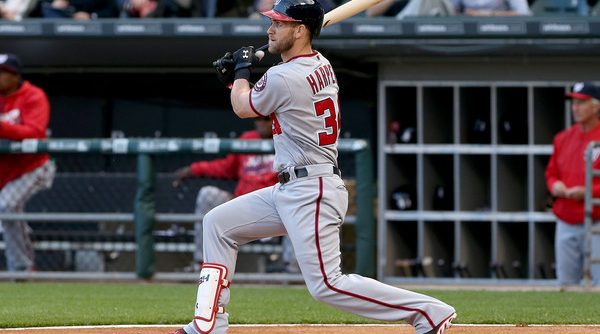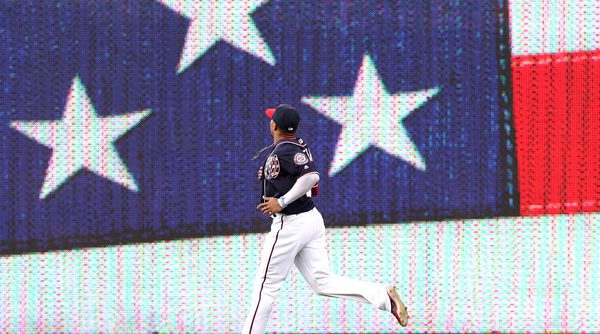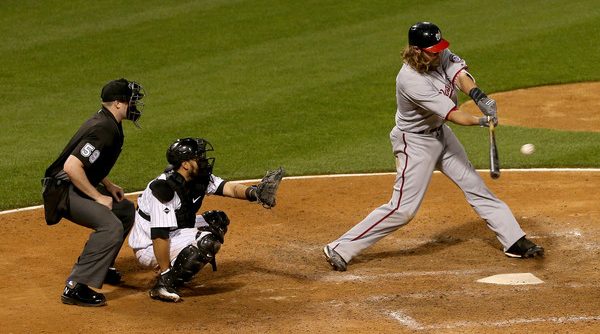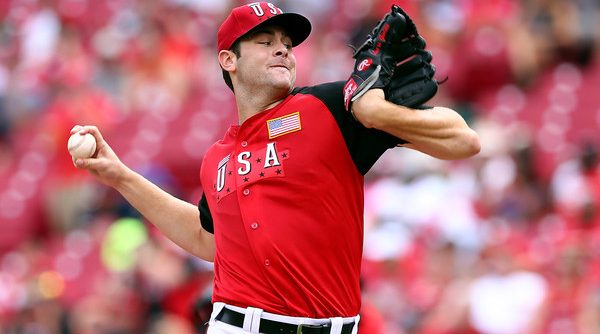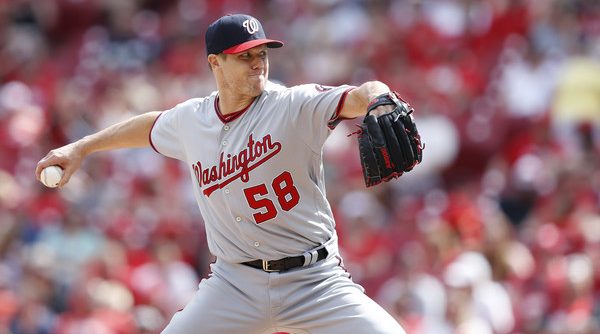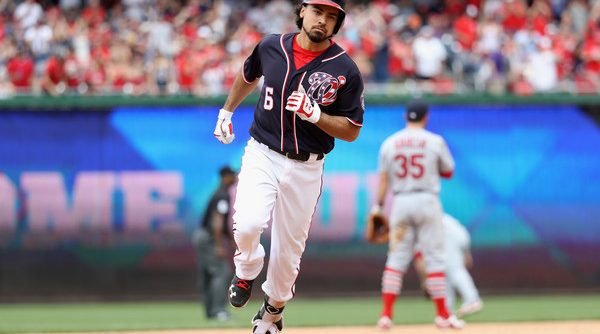Only a few months ago, large portions of the Nationals’ fan base were coming up with ways to ship Wilson Ramos out of DC and drawing up fictitious trade proposals for the Brewers’ Jonathan Lucroy to “upgrade” the catcher position. It’s hard to blame them. Although Ramos was finally able to stay healthy in 2015, he posted the worst offensive season of his career and one of the least valuable seasons from a catcher in all of baseball. I would assume that those disbelievers have now seen the light as Ramos has turned into one of the most potent players in the big leagues in 2016, including a game-tying single in the ninth in Wednesday’s win over the Cubs.
So far this season, he leads nearly every major offensive category for catchers. He’s first in batting average, on base percentage, slugging, wOBA, home runs and RBI. He’s second in FanGraphs’ WAR calculation (behind Lucroy). You would be hard pressed to find an offensive statistic where Ramos isn’t one of the top catchers in the league. The narrative as to why Ramos has rebounded so well isn’t hard to see: he got LASIK surgery this offseason. Ramos claims he is now seeing the ball better than he ever has before. But is it really that simple? Let’s eyeball the statistics and determine if we can see signs of a player seeing the ball more clearly.
Judging by Ramos’ control of the strike zone in 2016, it certainly appears that he can see the ball better. Ramos currently has the lowest strikeout rate of his career at 12%, down from his 20% rate last year. He’s no longer allergic to taking a walk as he’s now walking at a 7% clip, his highest rate since 2012. Those aren’t flukey changes, either. Ramos, formerly a free swinger, is now a more patient hitter. He’s majorly cut down on swings at pitches outside of the strike zone and has been slightly more selective at pitches in the zone. Those kinds of changes indicate that Ramos has been better about waiting for a pitch to hit. He hasn’t been missing those pitches very often as he’s swinging and missing only 8% of the time, a marked improvement over the 12% swinging strike rate from 2015.
A more selective Ramos is a much better hitter. In 2015, Ramos struggled against all types of pitches but the fact that he couldn’t hit a fastball was the most telling sign of his struggles, hitting only .250 against the pitch. He’s really turned that around this year, now walloping fastballs with a batting average over .355. On top of that, he no longer fails against sliders, now hitting .333 against the pitch after hitting only .187 last year. That’s a sight for sore eyes in DC.
By being selective, Ramos has been able to hunt out pitches to hit with power. He’s already launched 10 home runs and is only seven dingers away from setting a new career high in that category. The most encouraging sign for Ramos’ power may be that he has hit bombs to all fields. He has one to center field and three to right field, taking pitches in all parts of the strike zone out of the park.
If Ramos is now seeing the ball better at bat, which the stats appear to back up, then he should also be seeing the ball better from behind the plate. Ramos, despite his previous Gold Glove nomination, was not a good receiver. He consistently rated poorly by catcher framing metrics that measure the number of borderline strike calls catchers can earn for their pitchers. More often than not, Ramos was not only not getting extra strike calls but his movements behind the plate actually turned pitches in the strike zone into balls in the eyes of the umpire. Ramos now rates as a neutral pitch framer, a major improvement in an area of weakness for the Buffalo. That improvement would suggest that Ramos is also seeing the ball better as a catcher, which allows him to sync his movements up with each pitch to entice the umpire into calling more pitches as strikes.
To recap, Ramos is now laying off more pitches out of the zone and making better contact on pitches in the zone. He’s taking walks and punishing pitches he used to struggle with. He’s even improved his pitch framing abilities. All of those improvements can potentially be linked to better eye sight. Looks like there may be something to this LASIK storyline after all.
While Ramos has been playing at an All-Star level so far this season thanks at least in part to LASIK, the chances of him keeping this pace up are not so clear. That league leading batting average is propped up by a BABIP over .340, a not totally unreasonable BABIP but one that seems high for the not-so-fleet of foot Ramos. The new found power is also a cause for concern. Before Tuesday night’s game, Ramos was hitting groundballs 54% of the time. Finding a successful power hitter who hits most of his balls on the ground is hard to do. In fact, Ramos currently has the third highest groundball rate of hitters with 10 or more home runs in 2016. Only Ryan Braun of the Brewers and Eric Hosmer of the Royals have double-digit home runs to their name but higher groundball rates than Ramos. On top of that, only five of the 73 players to have surpassed the 10 home run mark this season have groundball rates over 50%. It’s not to say that Ramos can’t continue to succeed with this strange batted ball profile, but it would make him a very unique player.
Of course, Ramos has been a unique player this year. There are plenty of other ball players who have had LASIK without a huge bump in results (looking at you, Dan Uggla), but the numbers do seem to back up the narrative that Ramos is hitting better because he’s seeing better. For Nats’ fans, that’s an encouraging conclusion that implies Ramos may be able to keep this up for rest of the year. I don’t have the foresight to predict Mike Rizzo’s moves, but it’s certainly an argument for keeping Ramos around beyond 2016.

